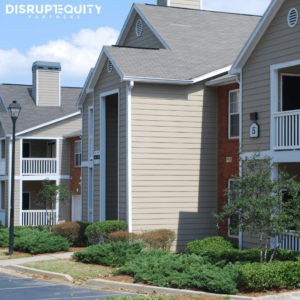What Are The Multi-Family Real Estate Asset Classes?
Multifamily real estate investing is considered one of the best and safest asset classes to invest in.
For centuries commercial real estate investing has allowed investors to achieve significant tax benefits, steady cash flow, and strong asset appreciation.
Each of the perks can vary based on the type of real estate asset class you invest in. In multi-family real estate, assets classes are broken down into 4 distinct categories, class a apartments, class b apartments, class c apartments, and class d apartments. Multi-family assets are evaluated primarily based on their location, age, amenities, and level of rental income.
As a real estate investor, it’s vital to understand each real estate asset class to determine which property type fits your investment goals.
Let’s Get Into Multifamily Real Estate Property Types!
Class A Apartments
- Newest and most luxurious apartment complexes built within the last ten years
- Located in popular and desirable areas
- Class A apartments have the highest price per door
- Market cap rates are generally lower than any other multifamily real estate asset class
- In most cases, investors purchase for appreciation

Class B Apartments
- Class B assets have generally been built within the last 15-20 years
- The asset class is well maintained but less luxurious than class A apartments
- Cap rate is between class A and class C apartments
- In most cases, investors purchase for property appreciation over cash flow

Class C Apartments
- Typically over 30 years old
- Class C apartments typically incur below-market rents
- Class C assets will typically have outdated interiors, exteriors, and require a higher CAPEX budget
- Most tenants in class c buildings rent out of necessity
- Class C assets generally provide the best cash flow for investors
- Most real estate syndicators use a value add strategy and will force the appreciation of the asset through operational efficiencies, renovations, and rebranding.

Class D Apartments
- Typically over 30 years old
- Class C apartments typically incur below-market rents
- Class C assets will typically have outdated interiors, exteriors, and require a higher CAPEX budget
- Most tenants in class c buildings rent out of necessity
- Class C assets generally provide the best cash flow for investors
- Most real estate syndicators use a value add strategy and will force the appreciation of the asset through operational efficiencies, renovations, and rebranding.

Which One of the Following Investments Offers The Greatest Liquidity?
Interested in learning which of the following investments typically has the largest potential growth?
Generally, Class C investments offer real estate syndicators the highest cash flow and the greatest opportunity to force appreciation. Class C can be top-performing properties for many real estate investors.
Class C apartments can also be the first to appreciate if they are purchased within a rising market.
Overall when analyzing which multi-family real estate asset class to invest in, location is everything. Here’s a blog on how to identify a good market for your investment.
Each real estate asset class comes with its benefits, before investing analyze your asset classes to determine if it fits your desired risk and return!
Video Transcription
This is Jane
Jane is on the road to becoming a passive investor in multifamily real estate!
Jane is presented with many types of apartments to invest in but does not know which one would provide her with the greatest return on her investments.
Jane is told by Derick, that just like her kids report cards, apartment complexes are also graded!
Derick says that multifamily assets are evaluated based on their location, age, amenities, and their level of rental income.
Derick tells Jane that Class A apartments represent the newest and most luxurious complexes built within the last ten years.
Class B apartments are nice complexes built within the last 20 years but are not quite up to the highest standards as Class A.
Class C apartments are usually over 30 years old. These properties might include outdated interiors, exteriors and need some improvements.
Lastly Class D complexes are considered extremely run down and need major repairs!
After hearing this Jane immediately thinks she should invest in Class A properties because of their beautiful construction and location…… BUT Derick advises her otherwise.
Derick informs Jane that Class C offers a huge opportunity for value to be added to the property!
Investing in Class C allows new owners to come in, renovate the property, improve management, and dramatically increase the worth of the asset!
These changes will allow rent growth and occupancy to skyrocket! Giving investors a much higher return.
Jane is now very confident in her decision to invest a Class C complexes!

